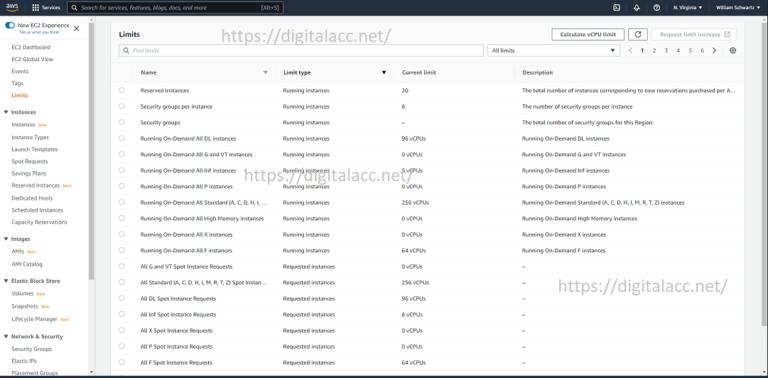
Digital technology, software development concept. Coding programmer, software engineer working on laptop with circuit board and javascript on virtual screen, internet of things IoT
(Maximizing API Success: The Importance of Wireframing and Modeling) are the backbone of modern digital ecosystems, allowing different applications to communicate with each other seamlessly. In a world where connectivity between systems is crucial, designing an effective API can mean the difference between smooth integration and a costly, inefficient process. One of the most critical steps in API development is the early phase of wireframing and modeling. These stages lay the foundation for successful API implementation, ensuring that the final product meets both functional and user experience requirements.
Understanding the Basics of Maximizing API Success: The Importance of Wireframing and Modeling
Before delving into wireframing and modeling, it’s important to understand the basic principles of API development. APIs serve as intermediaries, allowing software applications to communicate. They define how requests and data are sent between systems, and how systems respond to those requests. APIs have become integral in cloud computing, mobile app development, e-commerce platforms, and virtually any application requiring data exchange.

API development is a multi-step Maximizing API Success: The Importance of Wireframing and Modeling process, involving planning, design, testing, deployment, and maintenance. However, the initial design phase, where wireframing and modeling come into play, is arguably the most crucial. It’s during this stage that developers lay down the architectural framework that will govern how the API behaves, how it will be utilized, and how it interacts with other systems.
What is Wireframing in Maximizing API Success: The Importance of Wireframing and Modeling?
Wireframing, in the context of API development, refers to the creation of a simplified visual representation of the API’s structure. Just like in web or mobile design, wireframes are basic sketches that outline the interface’s functionality without going into extensive detail about the design or aesthetics. For APIs, wireframes help visualize endpoints, inputs, outputs, and how data flows through the system.
The goal of wireframing is to ensure that all stakeholders – from developers to business analysts – have a clear understanding of how the API will function. By laying out the basic framework, developers can identify potential issues early, making it easier to make adjustments before writing any code. Wireframing provides a high-level view, offering clarity and Maximizing API Success: The Importance of Wireframing and Modeling helping avoid miscommunication, saving time and resources during the development process.
The Role of Modeling in Maximizing API Success: The Importance of Wireframing and Modeling

While wireframing offers a visual representation, modeling digs deeper into the technical aspects of API design. API modeling involves creating detailed representations of data flows, resource structures, and the relationships between different components of the API. It defines how the API will interact with databases, what kind of requests can be made, and what types of responses will be generated.
Modeling goes beyond sketching; it involves creating detailed diagrams and sometimes even initial mock code snippets that help developers understand the data architecture. Tools like Swagger, RAML, and OpenAPI are often used during this phase to define the API structure and ensure that all potential use cases are accounted for.
By creating a detailed model, developers ensure that the API can handle various scenarios, scale efficiently, and meet performance expectations. Modeling also helps in setting clear boundaries and defining the API’s functionality, Maximizing API Success: The Importance of Wireframing and Modeling which makes it easier to align with business goals and user needs.
Benefits of Wireframing and Modeling for Maximizing API Success: The Importance of Wireframing and Modeling Success
The combination of wireframing and modeling serves as a powerful strategy to ensure API success. By investing time and effort into these early phases, organizations can reap several benefits during development and implementation.
Improved Communication
Wireframing and modeling help improve communication between technical and non-technical stakeholders. Business leaders, project managers, and clients may not always understand the complexities of API development, but a visual wireframe or a detailed model can bridge the gap. It allows everyone involved to have a clear Maximizing API Success: The Importance of Wireframing and Modeling picture of what the API will do and how it will function.
Reduced Development Time and Costs

When developers have a clear plan in place from the outset, they can avoid common pitfalls that lead to delays and budget overruns. Wireframing and modeling allow teams to catch potential issues early, reducing the likelihood of significant changes during development. Additionally, these techniques help in streamlining the coding process, as developers have a precise blueprint to follow.
Scalability and Flexibility
By thoroughly modeling the API’s architecture, developers can create a scalable design that allows for future expansion. Whether the API needs to handle larger data volumes, integrate with new systems, or add features later on, a well-modeled API will be flexible enough to accommodate these changes without requiring a complete redesign.
Enhanced User Experience
APIs aren’t just technical components—they directly impact user experience. If an API is slow, unreliable, or poorly structured, it will affect the end user’s experience. Wireframing allows developers to consider how the API will be used and ensures it meets performance expectations. A focus on user-centric design will enhance the overall user Maximizing API Success: The Importance of Wireframing and Modeling experience, resulting in more satisfied users and better outcomes for businesses.
Common Pitfalls in Maximizing API Success: The Importance of Wireframing and Modeling Wireframing and Modeling
Skipping wireframing and modeling in API development is a common mistake that can lead to significant problems down the road. Without these steps, teams risk creating APIs that are difficult to use, inflexible, and prone to errors.
For instance, without wireframing, it’s easy to overlook important endpoints or fail to map out the full range of interactions an API will have with other systems. Similarly, without proper modeling, the API may have inefficiencies in how it processes data, leading to slow performance or scalability issues.

Another pitfall is the misalignment between business needs and the technical implementation. Without wireframing and modeling, Maximizing API Success: The Importance of Wireframing and Modeling developers may build something that doesn’t meet the requirements of the project, leading to costly revisions.
Best Practices for Maximizing API Success: The Importance of Wireframing and Modeling
Successful API development requires a balanced approach to wireframing and modeling. The goal should be to create a clear, well-documented design that aligns with business objectives while being flexible enough to accommodate changes. Here are some best practices to follow during the process:
- Involve Stakeholders Early: Maximizing API Success: The Importance of Wireframing and Modeling Engage all relevant parties during the wireframing stage to ensure that the API’s functionality aligns with business goals.
- Use Standard Tools: Leverage industry-standard tools like Swagger or OpenAPI to create models that are easy to understand and implement.
- Iterate Frequently: Wireframing and modeling should be iterative processes. Don’t be afraid to make adjustments as the project evolves.
- Focus on Usability: Always consider how the API will be used by developers and users. Prioritize a user-friendly design that is intuitive and efficient.
FAQs
What is wireframing in Maximizing API Success: The Importance of Wireframing and Modeling?
Wireframing in API Maximizing API Success: The Importance of Wireframing and Modeling development refers to creating a basic visual outline that shows how an API will function. It’s a simplified sketch that helps stakeholders understand the structure, endpoints, and data flows of the API.

Why is modeling important for Maximizing API Success: The Importance of Wireframing and Modeling?
Modeling is crucial for API success because it defines the detailed structure and behavior of the API. It helps ensure that the API meets functional requirements, scales efficiently, and handles different scenarios effectively.
Can I skip the wireframing and modeling phase?
Skipping wireframing and modeling is not recommended. Without these steps, you risk creating an API that doesn’t meet user needs, performs poorly, or requires costly revisions later in the development process.
What tools are commonly used for Maximizing API Success: The Importance of Wireframing and Modeling?
Popular tools for API modeling include Swagger, RAML, and OpenAPI. These tools help developers create detailed models of the API, define Maximizing API Success: The Importance of Wireframing and Modeling endpoints, and document the API’s functionality clearly.
How does wireframing improve communication in Maximizing API Success: The Importance of Wireframing and Modeling?
Wireframing improves communication by providing a visual representation of the API’s structure. This helps non-technical stakeholders understand how the API will function, ensuring that everyone is on the same page before development begins.




